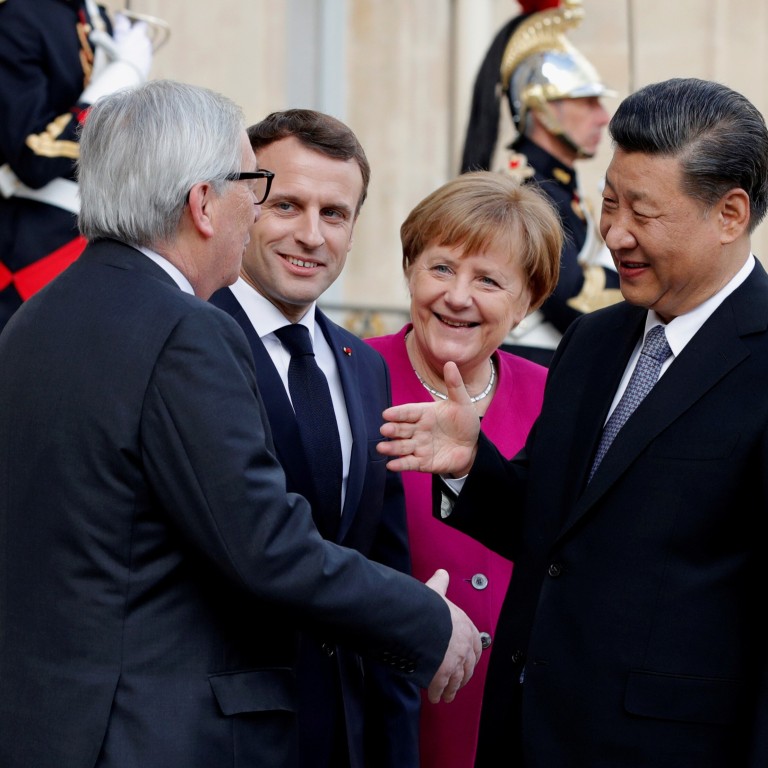I suggested that he shun US pressure and work instead with Japan as head of the Trans-Pacific Partnership, the European Union and Asean at the heart of the 16-economy
Regional Comprehensive Economic Partnership (RCEP). This group totalling over 50 countries might jointly tackle urgent trade disagreements and respond to the many complaints about China’s international trade practices – in particular its behind-the-border barriers to foreign companies, treatment of intellectual property, extensive use of subsidies, and preferential treatment of state-owned enterprises.
Sixteen months later, I admit in all modesty that my advice has been ignored. China and the US have held over a dozen rounds of negotiations towards the
partial trade deal announced recently. Meanwhile, EU officials are complaining about postponed meetings and “
promise fatigue” as it enters the seventh year of negotiation on an
investment agreement with China. The Association of Southeast Asian Nations’ RCEP initiative remains half-baked. And China remains on the margins of so-far forlorn efforts to repurpose the WTO and
rescue its dispute settlement regime.
President Xi still gives lip service to the need to follow multilateral rules and avoid bilateralism. The
South China Morning Post recently
reported a top Chinese trade official as saying: “The [US] deal should abide by multilateralism and be based on market rules … Import arrangements should be in accordance with the rules of the World Trade Organisation.” But quite how Beijing can honour a commitment to boost US imports by at least US$200 billion a year without squeezing other trade partners and breaking WTO rules has yet to be seen.
Despite widespread anger and concern, in particular in Europe, over the Trump administration’s “
America first” bellicosity, China’s window of opportunity to build friendships and international trust has barely opened. As journalist Isabel Hilton noted last year in the Chinafile project led by the Centre on US-China Relations: “The US-EU alliance was built on shared values: democracy, human rights, robust trade partnerships, and the security of mutual defence. The EU is China’s biggest trade partner, but a closer alliance founders on the incompatibility of fundamental values. China may be an important partner, but becoming an ally is another story.”
In Hong Kong, Chatham House’s Tim Summers confirmed Hilton’s views: “While Europeans generally fume at the US administration’s methods, there is some sympathy with the goals of trying to force China into a more accommodating economic stance.”
The reality is that while China’s lip service to multilateralism has been welcome, as has its robust commitment to the Bretton Woods institutions that have for the past seven decades set the rules for international trade and diplomacy, its differences are too deep, and too numerous, to enable trust to be built with any speed.
China’s transformation over three decades from a global pariah at the margins of the world economy, to a dominant trade and investment force and a
leader on many new technologies, has stretched the credulity of many former enemies and adversaries. Suspicions abound that make it difficult for many in Europe to trust China as a champion and rule maker for future trade liberalisation.
They look at China’s action in the
South China Sea, or in dealing with
Uygurs in Xinjiang, its growing military capacity and its use of
facial recognition technologies to keep tabs on its people – and hold back.
Even clearly positive initiatives – like its
unremitting effort to lift the living standards of China’s once dirt-poor 1.3 billion population, its impressive development of
5G technologies, its use of the
Belt and Road Initiative to help build critical infrastructure in many marginalised developing economies, and its
17+1 courtship of poorer Eastern European economies – remain sources of suspicion to many.
So even with Trump providing the perfect opportunity for China to make friends, it is perhaps not surprising that progress has been slow, and will remain so.
This has been particularly true with Europe, not simply because of its deep transatlantic alliances, but because the EU is a particularly awkward animal to tackle, either economically or diplomatically. As former US secretary of state Henry Kissinger famously said: “Who do I call when I want to speak to Europe?” When French President Emmanuel
Macron or German Chancellor Angela
Merkel visit Beijing and sign billion-dollar deals, are they visiting on behalf of the EU or their own economies? When Xi visits the EU summit in Leipzig next September, is he talking to 27 national leaders or the EU?
Despite these difficulties, it looks as though 2020 is going to be a year when China and the EU engage more meaningfully – perhaps driven by the imperative to finalise the long-stalled investment agreement.
The fact that a partial US trade deal has been at last agreed, and that Trump and his administration are set to focus on
presidential elections over the next 11 months might also help.
While it is easy to believe that my open letter to President Xi fell on barren ground, I have not lost all hope. I remain confident that Beijing hears clearly the calls for reform so forcefully expressed by American and European business groups in Beijing.
China will remain different, and often difficult to partner with, but I do not believe it wants to be an enemy. I believe it genuinely seeks to be a constructive contributor to the development of the global economy. Perhaps 2020 will at last be a year when we see actions rather than just words.
David Dodwell researches and writes about global, regional and Hong Kong challenges from a Hong Kong point of view


